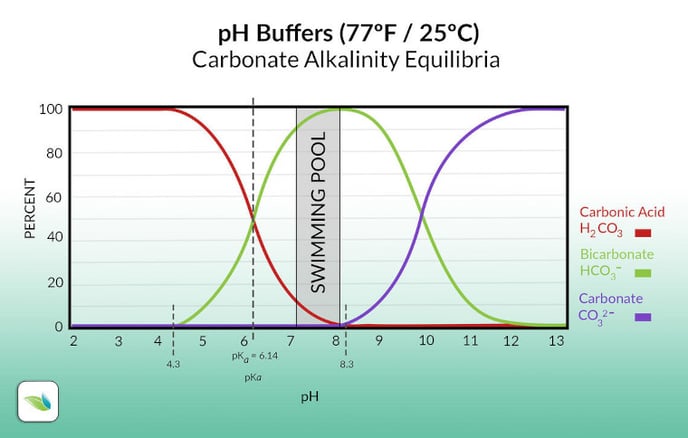How to lower Total Alkalinity without lowering pH too much
Reducing high alkalinity (120+ ppm) takes a lot of acid, and it should not be added all at once.
If you lower Total Alkalinity (TA) by more than 20 ppm at a time, it is highly likely that the pH will be reduced substantially, and it could create an LSI violation temporarily. This is why we advise pool owners and operators to not reduce alkalinity by more than 20 ppm at a time. We say so on the hyperlink in the Orenda App > dosing results > decrease alkalinity.
Related: How to reduce alkalinity

Muriatic acid is 18% denser than water. Do not column pour it! Photo credit: onBalance
The WRONG way to use acid in a pool
Contrary to popular belief, column pouring or "slugging acid" is a BAD practice. It does not reduce alkalinity any faster than diluted acid can. In fact, it's the opposite. Since muriatic acid is heavier than water, it sinks:
The ideal method for lowering alkalinity is using diluted acid. You want the acid to have a lower density so that it slowly matriculates down through the water, neutralizing alkali along the way. In a perfect world, the acid would sink so slowly that it is already completely neutralized before it reaches the floor. So much so that it should no longer be acid when it gets to the bottom. That is the correct way to use acid.
The right way to use acid: Dose, measure, dilute, pour.
- Dose acid correctly, based on the Orenda Calculator™. When lowering TA, do not reduce more than 20 ppm (mg/L) in a single dose.
- Measure the acid with a plastic measuring cup, then
- Dilute the acid in a bucket of pool water. Minimum 10:1 dilution is recommended, but more is better. If you can do 50:1, do it. Then finally,
- Pour the diluted acid around the perimeter of the pool. Then brush thoroughly.
These few extra steps take only seconds to do, and they make an enormous impact on how well the acid works in the water.
What is acid actually doing to lower the alkalinity in water?
Technically, acid is adding a Hydrogen ion (H+) to bicarbonate ions in water (HCO3-). When that happens, HCO3- becomes H2CO3, which is carbonic acid. Carbonic acid is H2O+CO2, or in other words, dissolved carbon dioxide. Since we know the amount of dissolved CO2 in water determines the pH, acid lowers the pH by increasing the amount of carbonic acid.

In simplified terms, acid "burns through" alkalinity and converts it to dissolved CO2, which then must off-gas and leave the water. If acid and alkalinity are the fire, CO2 off-gassing is the smoke.
This is especially important to understand if your pool has a solid pool cover on it. If your pool is covered, how is CO2 (the smoke) supposed to escape?
It cannot.
And because CO2 cannot escape, the pH tends to stay suppressed, which leads to pool surface and equipment damage due to an excessively low LSI. This is a major issue for covered saltwater pools (because CO2 is off-gassed within the cell due to turbulence from Hydrogen gas bubbles) and covered trichlor pools (because trichlor is acidic, and constantly creates more carbonic acid by neutralizing bicarbonate alkalinity in the water).
How to lower TA quickly and effectively: create turbulence!
When reducing alkalinity with acid, YES, pH will also be reduced. But there is a way to minimize this: create turbulence in the pool so CO2 leaves as fast as possible. This means accelerating the loss of CO2 so the pH rises back up quickly.
To get back to our burning through the alkalinity analogy, get the smoke (CO2) from the fire (acid converting bicarbonate ions into carbonic acid) out of the water as fast as you can.
This means running water features, bubblers, sprayers, jets, waterfalls, and anything else you can. We have seen people get creative with air compressors and diffusers to create bubbles. The point is, you want the CO2 out quickly.
As long as you don't overdose acid–like trying to reduce TA more than 20 ppm at a time–or fail to dilute acid, this system works really well.
Just remember: dose, measure, dilute, pour. Then move the water to get the CO2 out as fast as possible.